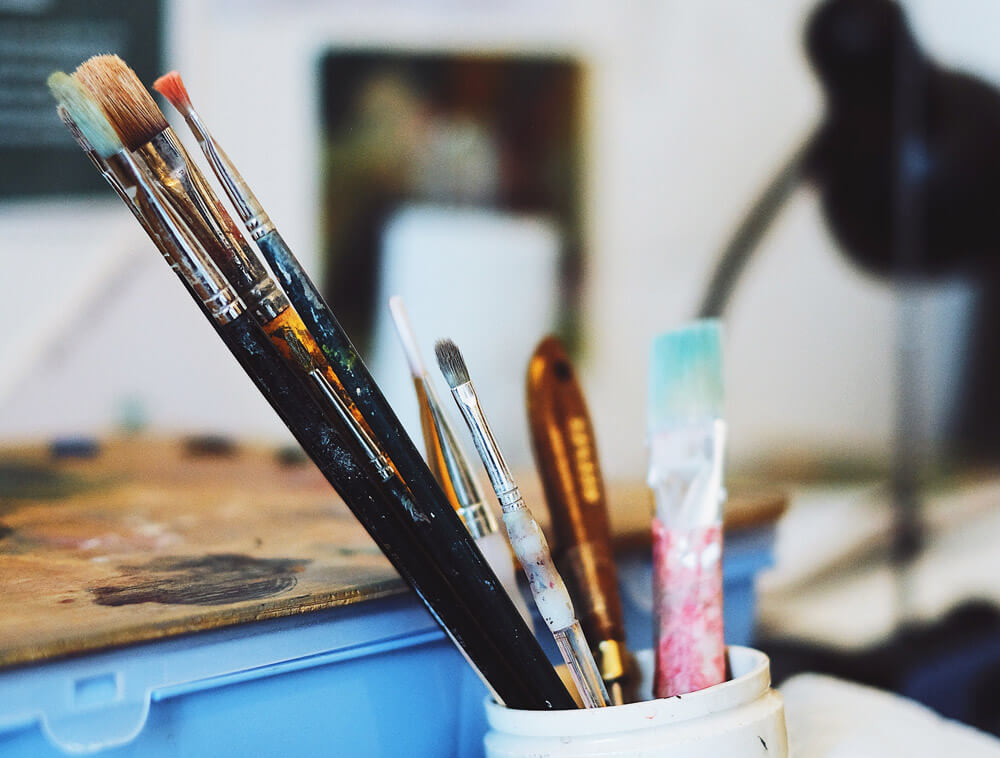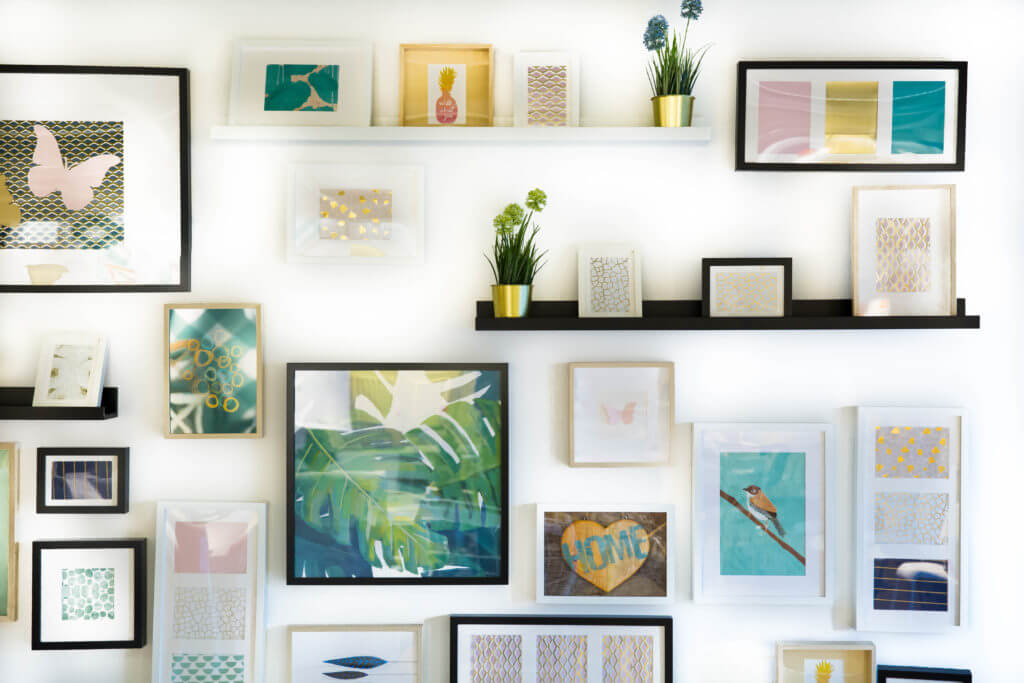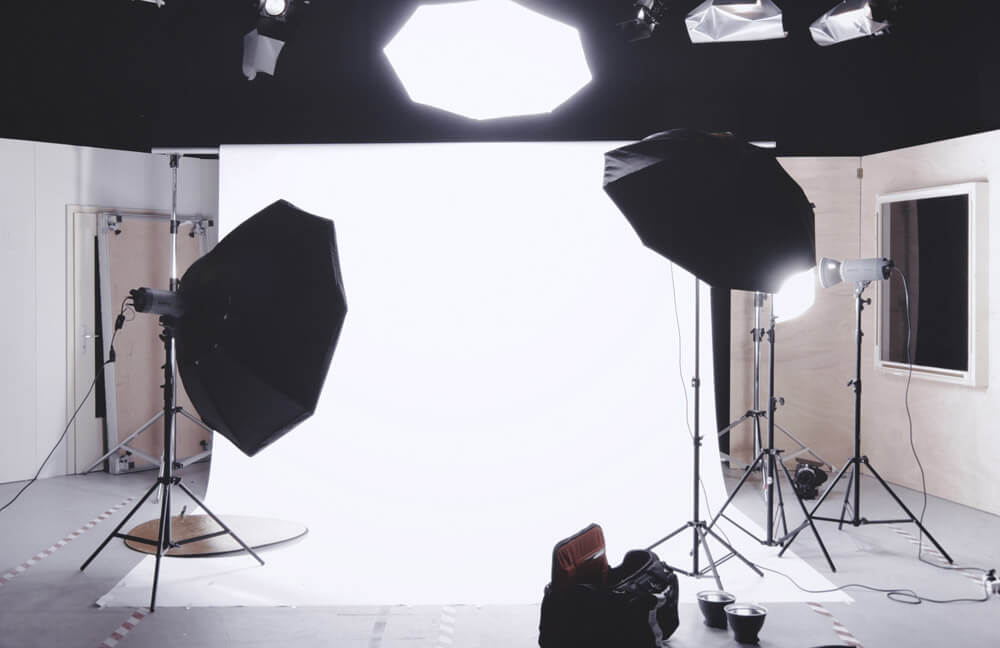You’ve probably heard the saying, “You have to spend money to make money,” right?
That’s not always easy to hear when you’re just starting out as an artist, especially if art sales are slow to begin with! However, if you are able to allocate some funds to professional development it can (and often does!) end up rewarding you with more than what you put in.
And here’s some good news: investing in your art career doesn’t always require you to spend money. Just setting aside time to work specifically on business and administrative tasks can be incredibly helpful and yield great results.
So let’s dig into some of the ways you can invest in your art career today!
Free art career investment ideas
1. Review, revise, and update!
Have you looked at your resume, artist statement, or website lately?
If not, I would suggest taking a moment to check that each has correct and up-to-date information. Make sure to have your newest work photographed and add it to your site. List any recent accomplishments that you may not have added to your resume yet and read over your statement to ensure that it still accurately describes the art that you are currently working on.
2. Get organized
Having everything perfectly arranged in your studio or workspace isn’t a necessity, but a few adjustments can make a big difference.
If you attended an event and have business cards lying around, save them in one place with your other contacts, preferably within an email marketing program like MailChimp. Set up an inventory of your work so that you can easily track the location and availability of each piece and have interactions with galleries, curators, and potential clients go much more smoothly.
3. Share your work
By now, most artists are active on social media. Try your best to post regularly and share high quality images of your art. Using the email list mentioned above, go ahead and send a newsletter with recent or available pieces.
Perhaps you’re ready to start reaching out to galleries or curators directly. If that is the case, then draft a concise, professional email introducing yourself and your art. Do your research so that you’re only submitting to opportunities where your work would be a good fit. This will save you both time and an excess of rejection letters.
Invest in your art for less than $50
4. Buy an art book
Whether it is business advice geared towards artists, the empowering story of a creative person you admire, or a glossy publication with images by an artist whose work inspires you, picking up a new book to read will both help you learn and can give you a break from studio time while still being productive. You can also buy books in audio format and listen while you work!
5. Take a course or workshop
Check local museums and art centers for creative classes that interest you. You can also find online courses to take from home on sites like CreativeLive, Skillshare, and more.
6. Order business cards or postcards
It’s nice to have these ready to go when you’re preparing for an upcoming exhibition and attending events such as gallery openings or art fairs. Nowadays most companies even offer easy-to-use, customizable templates that make designing professional quality cards a breeze.
7. Submit to a juried exhibition or recognized art publication
Not only does this add to your resume if you are accepted, but it can also help you grow your network and get your work noticed by new curators and collectors. (Here are some excellent tips for getting accepted into juried shows in the first place.)
8. Try Facebook or Instagram ads
Spending as little as $10 or $15 to boost a post can make a big impact on how many people end up seeing your work! Having more followers doesn’t automatically equal more sales, but social media is a great way to have new people be introduced to what you do as an artist whether or not they eventually become a collector in the future.
Ready to spend up to $100?
9. Buy frames for your artwork
You don’t always have to wait until a show to make your work “ready to hang.” Sometimes just being able to visualize how your piece will look on their wall helps close the sale with a potential buyer.
10. Consider purchasing art supplies & shipping materials in bulk
Depending on where you shop for your creative and packing materials, you may find that they offer discounts on buying, for example, five canvases rather than one or two at a time. As long as you have room to store them why not plan in advance? It’s more than likely you will use them over time. Even if nothing is overtly advertised, you can always ask!
11. Hire a studio assistant to help with a project or exhibition
While you may not have the funds to keep a studio assistant on a permanent basis, there are certain occasions when your time really is more valuable than your money. Use it to hire a local art student for a few hours to help with tasks that are time-consuming, but that don’t require you to do them personally.
Art career investments for $500 (or less)
12. Book a session with a business mentor or artist coach
If you want to improve your sales, marketing, and money management strategies, a business coach might be the right fit for you to get one-on-one training and accountability. There are also mentors who specialize in working with artists and can assist with outlining the steps you should take to jump ahead in your career.
13. Have your work professionally photographed
It’s great if you’ve been making do with your iPhone or a simple digital camera to shoot your work, but you will certainly see a difference in the quality of images that a photographer can provide you.
14. Upgrade your studio
Consider investing in new or better tools and equipment, such as additional design software or other technology, a drafting table, storage racks, flat files, or anything similar that will add to your workspace.
Boost your art career for around $1000
15. Take a course at a local university
When you’re looking for a little more in-depth coverage than a book or short-term workshop will give you, browse the course offerings at a local community college or university. Some may be able to offer a lower price point for auditing the class rather than taking it for credit.
16. Go on an artist residency
Always wanted to travel? Combine your passions and seek out a residency in a place you’d want to visit. They often provide affordable housing and some will help with meals so all you’ll need to do is budget for additional food and transportation.
Take the next step (over $1000)
17. Pay for a booth at an artist-focused art fair
Selling online can be hard as the majority of collectors still prefer to purchase work that they’ve seen in person. If you are not yet represented by a gallery, this is an opportunity to get your art in front of potentially thousands of art lovers and buyers.
Find a fair that specifically focuses on artists showing their own work like The Other Art Fair or Superfine.
18. Get a certification
This is a great way to supplement your income from art sales by broadening the scope of your freelance skills. Perhaps you can teach, do design work or photography on the side.
I hope that this article has given you a few new ideas for investing in your creative practice and that they help you take the next step in your career!
Special thanks to Alicia Puig for sharing this article! Read more of Alicia’s invaluable advice at Create! Magazine, or purchase her book, The Smartist Guide: Essential Art Career Tips for Emerging Artists, which she co-authored with artist Ekaterina Popova.
This post may contain affiliate links.





